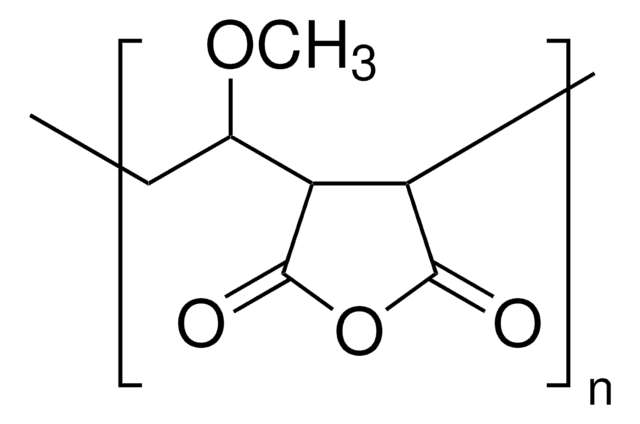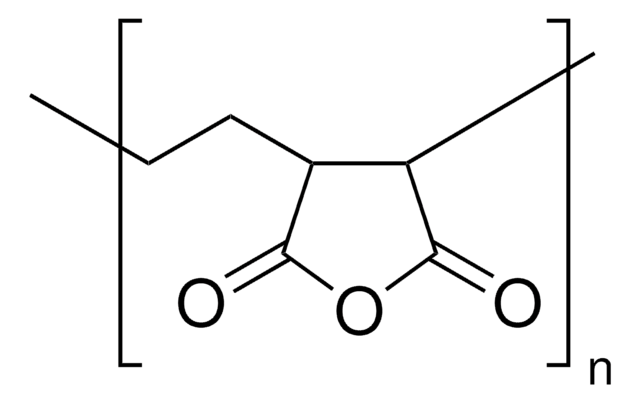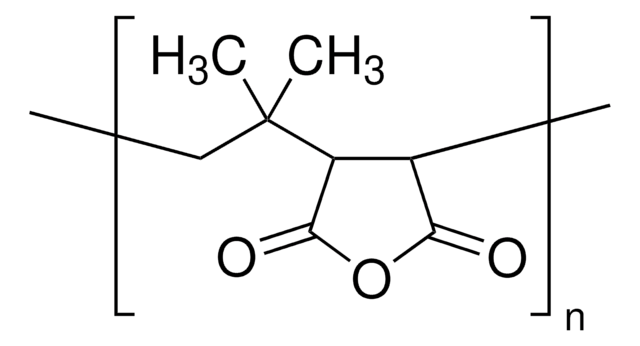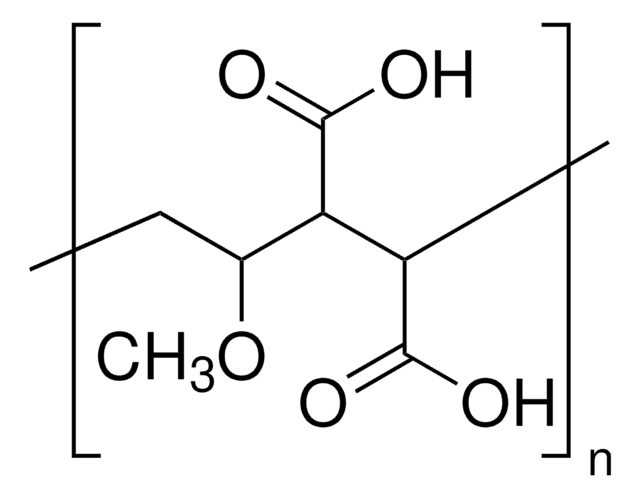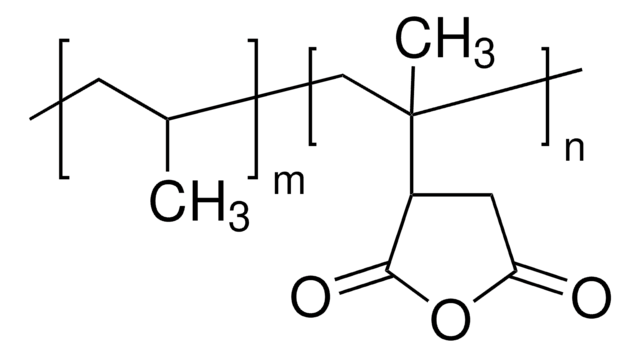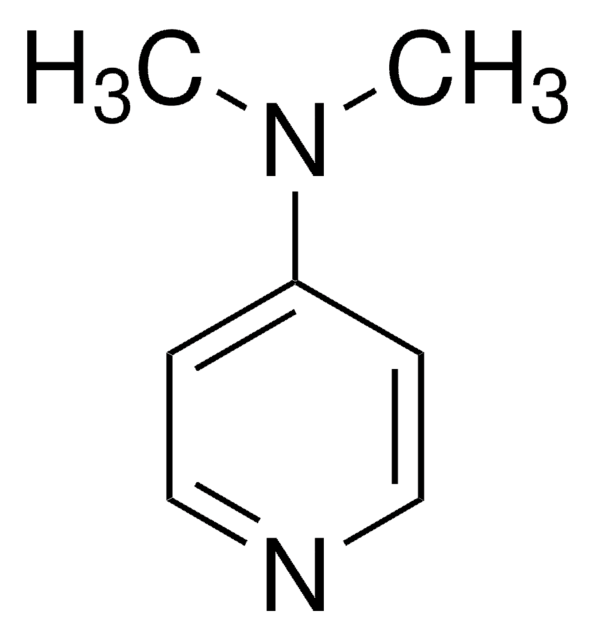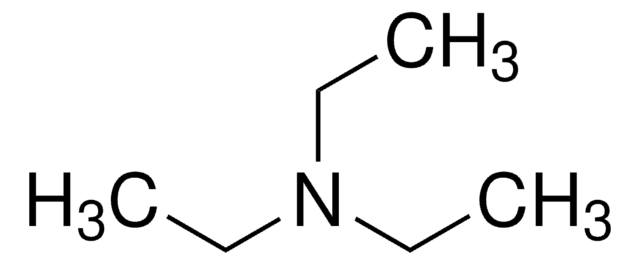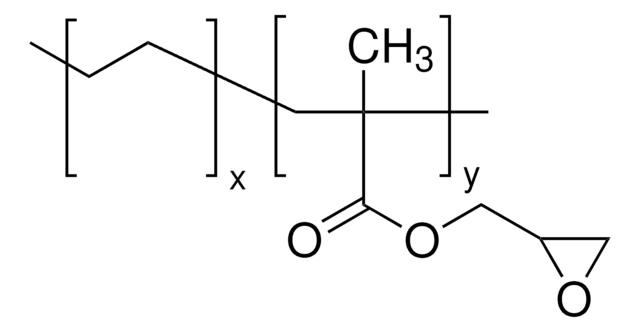416320
Poly(methyl vinyl ether-alt-maleic anhydride)
average Mw ~1,080,000, average Mn ~311,000
Synonym(s):
maleated copolymer, maleated polymer, maleic copolymer
About This Item
Recommended Products
form
powder
Quality Level
mol wt
average Mn ~311,000
average Mw ~1,080,000
impurities
<2% benzene
solubility
H2O: soluble (upon hydrolysis)
organic solvents: soluble
SMILES string
O1C(=O)C=CC1=O.O(C)C=C
InChI
1S/C4H2O3.C3H6O/c5-3-1-2-4(6)7-3;1-3-4-2/h1-2H;3H,1H2,2H3
InChI key
UPBDXRPQPOWRKR-UHFFFAOYSA-N
Looking for similar products? Visit Product Comparison Guide
Related Categories
Application
- To prepare antimicrobial hydrogels with good mechanical strength, adhesiveness to the skin, and excellent swelling ability. For example, autoclaved mixtures of P(MVE-MA) and PVA (polyvinyl alcohol) can inhibit bacteria growth against Staphylococcus aureus.
- As an electrolyte additive for stabilizing the interface of high-voltage layered Li-rich oxides (LLROs). P(MVE-MA) can absorb more H2O from the electrolyte and suppress the oxidative decomposition of the electrolyte.
- To functionalize electrospun PVA nanofibers for protein adsorption. These modified nanofibrous membranes can be used for protein purification.
- To synthesize separator membranes with good ionic conductivity. These membranes keep the positive and negative electrodes apart and prevent electrical short circuits.
Signal Word
Danger
Hazard Statements
Precautionary Statements
Hazard Classifications
Carc. 1A - Eye Irrit. 2 - Muta. 1B - Skin Irrit. 2 - STOT RE 2
Target Organs
Blood
Storage Class Code
6.1C - Combustible acute toxic Cat.3 / toxic compounds or compounds which causing chronic effects
WGK
WGK 3
Flash Point(F)
Not applicable
Flash Point(C)
Not applicable
Choose from one of the most recent versions:
Already Own This Product?
Find documentation for the products that you have recently purchased in the Document Library.
Our team of scientists has experience in all areas of research including Life Science, Material Science, Chemical Synthesis, Chromatography, Analytical and many others.
Contact Technical Service